Oleophobic coating – what it is, how to clean your phone, what to do if the coating wears off
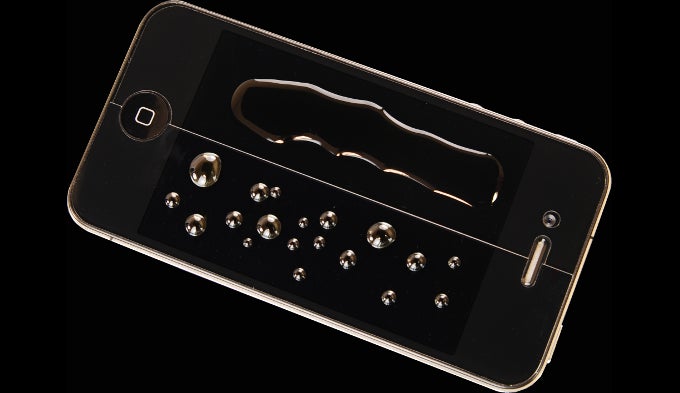
Image courtesy of Green Onions Supply
By this day, you've probably seen the term "oleophobic coating" on some tech-selling sites – it's sometimes mentioned in phone specs, while at other times screen protector manufacturers will boast about it on their product's page. But what exactly is this strangely-named substance, what does it do, and is it really important?
Well, it is. In reality, all modern smartphones have a thin glaze of the material covering their screens, which is probably why you don't see it toted so often on product pages, unless the manufacturer is really reaching for positive features to list. See, "oleophobic" is a word used to describe a type of material, which lacks an affinity to oils, ergo – it keeps fingerprint spots off of a glass panel. The idea to use such a coating entered the world of mobile phones with the iPhone 3GS, which was the first handset to be covered with this type of solution.
Oleo-what now?
Oleophobic coating provides a certain amount of finger smudge resistance to your smartphone's display; it doesn't make it fingerprint proof, mind you, but keeps the grease at bay, not allowing it to adhere to the glass. This is why a simple wipe with a soft cloth will often leave the smartphone looking brand new, without the use of any extra cleaning solutions. Usually, if any normal glass has fingerprints on it, trying to wipe it with nothing but a cloth will bring much different results – the grease spreads across the surface and just follows the cloth's strokes, without coming off completely – it generally needs some kind of cleaning solution to be completely cleaned off.
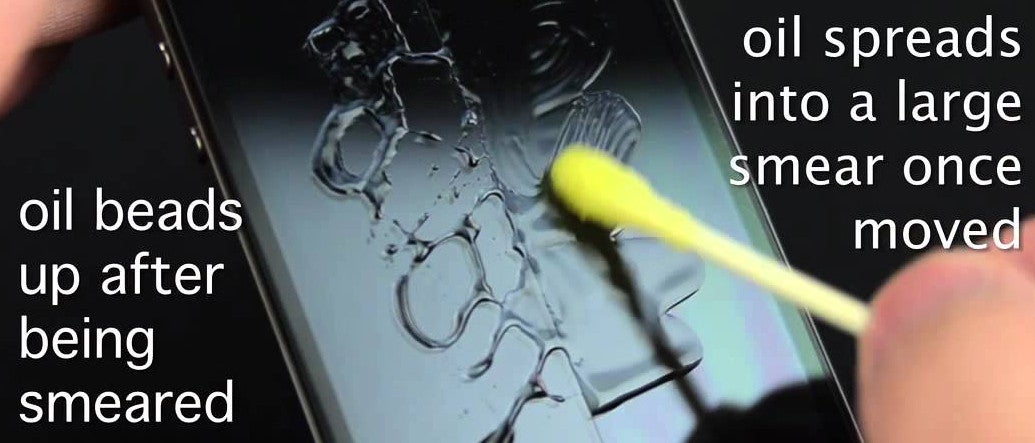
Image courtesy of Green Onions Supply
How do I clean my smartphone's screen and should I mind its oleophobic layer?
Yes, you should. It is not recommended to use any alcohol-based solutions when cleaning a capacitive touchscreen, neither is it a good idea to apply common household detergents, even if it's stated that they can be used for computer and / or TV screens. The aggressive compounds in such cleaners can easily wipe off the oleophobic coat and leave your glass “naked”.
Cleaning your mobile device's glass should generally be done with just a soft, cotton rag. In extreme cases, water-based solvents should do the trick – cleaners that are specifically designed for touchscreens can be bought at various outlets, just make sure to check the ingredients, as many manufacturers will feel no remorse in stamping an alcohol-based detergent as mobile-friendly. Also, applying the detergent to the rag, rather than spraying it directly on the screen, is a good idea.
I think my oleophobic layer has worn off, what should I do?
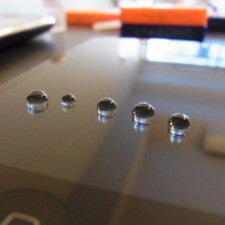
Water drops on oleophobic coating. Image courtesy of iFixit
If you are feeling paranoid about losing your screen's pristine feel, or if it has managed to shed its oleophobic coat for one reason or another, you can always use a screen protector. Yes, many users have a poor experience with the films, as they tend to smudge up quite fast and feel unpleasant to the touch, but this is mostly because they have tried the cheaper ones on the market. The more expensive display defenders will have an oleophobic coating of their own and will be less annoying to the purists.

If you absolutely refuse adding a third party film between you and your smartphone, you can buy an oleophobic coating kit. It consists of a tube of the grease-repelling polymer and a soft rag, which is used to distribute the chemical evenly across the screen – not a hard thing to do at home. Be advised, however, that such an aftermarket appliance will not be the same as the factory-baked layer and will most probably last less than your original coating did. Still, if you've done it once, you can do it again in a few months, no biggie. Plus – some users report that after application, the material actually covers up some of those annoying, shallow, visible-only-under-certain-lighting scratches.
image sources: iFixit, Green Onions Supply
Follow us on Google News

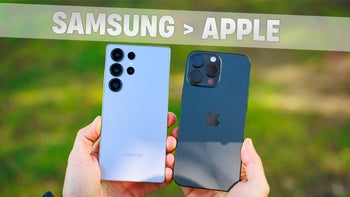
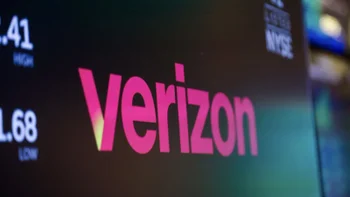


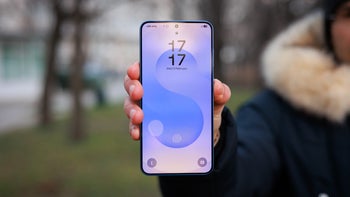
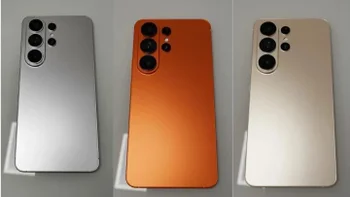

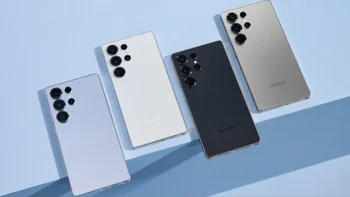

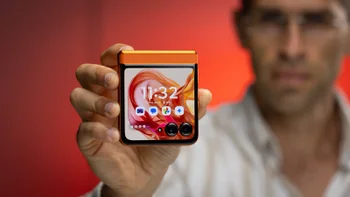
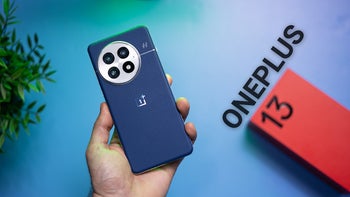
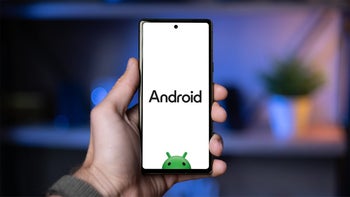
Things that are NOT allowed:
To help keep our community safe and free from spam, we apply temporary limits to newly created accounts: